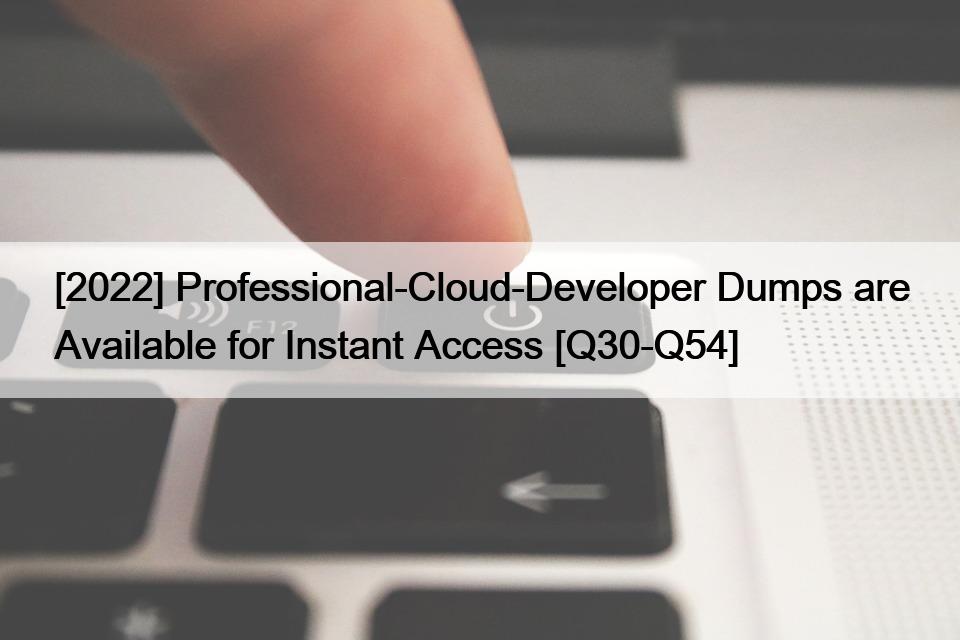|
Free Exams Dumps Materials https://exams.dumpsmaterials.com/2022/10/16/2022-professional-cloud-developer-dumps-are-available-for-instant-access-q30-q54/ Export date: Tue Feb 18 22:08:58 2025 / +0000 GMT |
||||||||||||||||||||||||||||||||||||
[2022] Professional-Cloud-Developer Dumps are Available for Instant Access [Q30-Q54] [2022] Professional-Cloud-Developer Dumps are Available for Instant Access Valid Professional-Cloud-Developer Dumps for Helping Passing Professional-Cloud-Developer Exam! Google Professional-Cloud-Developer Exam Syllabus Topics:
Google Professional Cloud Developer Certification PathThe Google Professional Cloud Developer Certification is the highest level of certification mainly focussing to the Google Professional Cloud Developer. There is no prerequisite for this exam but still it would be best to follow some sequence in order to prove immense knowledge as a Google Professional Cloud Developer. You can complete Google Associate Certifications then approach for the professional certification. For more information related to Google cloud certification track Google-certification-path The content of the qualifying test for the Google Professional Cloud Developer certification comprises of 5 topics covering specific knowledge and skills. The candidates need to thoroughly study a detailed exam guide available on the official website before attending the test. The highlights of the topics that constitute the structure of the exam are enumerated below:Section 1: Designing Highly Scalable, Available, and Reliable Cloud-Native Apps Within this subject area, the examinees need to demonstrate their proficiency in designing high-performing applications & APIs; designing secure applications; managing application data; executing application modernization.
Updated Professional-Cloud-Developer Dumps Questions For Google Exam: https://www.dumpsmaterials.com/Professional-Cloud-Developer-real-torrent.html 1 |
||||||||||||||||||||||||||||||||||||
Links:
|
||||||||||||||||||||||||||||||||||||
|
Post date: 2022-10-16 12:50:36 Post date GMT: 2022-10-16 12:50:36 Post modified date: 2022-10-16 12:50:36 Post modified date GMT: 2022-10-16 12:50:36 |
||||||||||||||||||||||||||||||||||||
|
Export date: Tue Feb 18 22:08:58 2025 / +0000 GMT This page was exported from Free Exams Dumps Materials [ http://exams.dumpsmaterials.com ] |